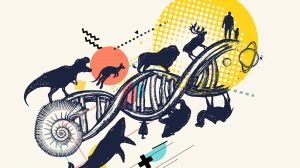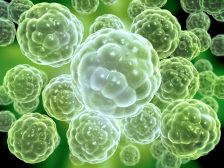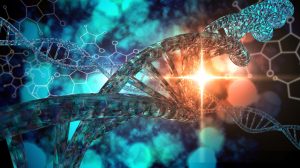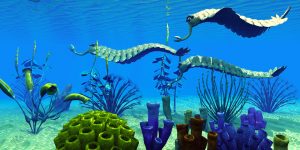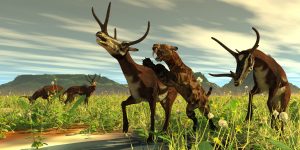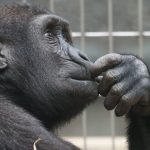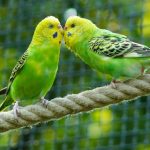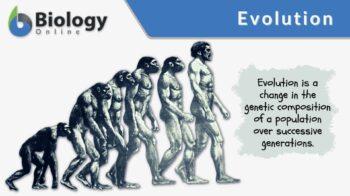
Evolution
n., plural: evolutions
[ɛvəluːʃ(ə)n]
Definition: a change in the genetic composition of a population over successive generations
Table of Contents
Evolution Definition
Evolution is defined as a change in the genetic composition of a population over successive generations. When we hear “evolution”, we often think of a progressive change. However, evolutionary changes are not directed toward perfection or even toward some defined goal. Evolutionary changes involve interaction between available genetic variants and the environment in which they exist. For evolution to proceed, there are vital key players: genetic variation, natural selection, and genetic drift. Etymology: Latin evolutio (“an unrolling, unfolding”), ex- (“from, out of”) + volere (“to roll”).
How does evolution lead to speciation? Share your ideas! Join us and participate in our Forum discussion: Sympatric vs allopatric speciation
Variation
Genetic variation is essential for evolution. For a variation to contribute to evolutionary change, it must be heritable, i.e. transmissible by parents to their offspring. Transmissible traits are those encoded in the genes. There are two sources of variation: mutation and recombination. A mutation is a change in the genomic DNA either by random replication errors or by environmental interaction with DNA nucleotides. Different mutations accumulate over time in different lineages. The introduction of new mutations into a population by individuals migrating from a different population is called gene flow. For instance, eye color is a character of varying traits, such as brown, green, blue, hazel, etc. In humans, the color of the eye varies from brown to black, depending on the melanin content in the iris and the cellular density of the stroma. The gene associated with melanin production is the OCA2 gene. All humans were originally brown-eyed.1 However, humans evolved to have other eye colors. The blue eye color in humans is not caused by blue pigments. Scientists tracked down the trait and found that a specific mutation within the HERC2 gene was partly responsible. It altered the function of the OCA2 gene that resulted in the production of less melanin. (Ref.1,2) Further studies suggested that all humans with blue eyes may have come from a single European ancestor who lived around 6,000 to 10,000 years ago, and who had the mutation responsible for the blue eye color, which eventually became widespread in modern populations. (Ref. 2)
Recombination is usually a consequence of sexual reproduction in eukaryotes. Since sexual reproduction involves two different parents, the mutations acquired in different lineages may be brought together by the fusion of parental gametes in fertilization. These different mutations may be further recombined by independent assortment and by crossing over during meiosis in the following generation. Pairs of chromosomes that have the same genes at the same loci but possibly different alleles are called homologous chromosomes. These homologous chromosomes pair up and exchange genetic material at prophase I of meiosis. Apart from homologous recombination, homologous chromosomes assort independently towards the end of meiosis. These meiotic events that produce new allelic combinations increase genetic variation. Sexual reproduction, thus, escalates evolution.
Natural selection
Charles Darwin’s theory of evolution by natural selection was first presented in his book The Origin of Species, published in 1859. In evolution by natural selection, individuals with advantageous traits are more likely to reproduce with greater success. Traits that contribute to reproductive success are called adaptive. Successful individuals pass on their adaptive traits to the next generation. Which traits are adaptive depends on the environmental conditions and mating choices. The evolution that is driven by natural selection is called adaptive evolution. Adaptive radiation is the selection of different sets of adaptive traits in populations or species living in different environmental conditions.
Genetic drift
Another mechanism that drives evolution is genetic drift. It produces random changes in the frequency of traits in a population. Genetic drift is more common in small populations since random changes have a greater effect in small populations. For example, the Afrikaner population in South Africa has an unusually high incidence of Huntington’s disease because the gene was introduced by a small founder group of Dutch colonists (Ref. 3). In addition to such founder effects, genetic drift can also occur in populations that have emerged from some catastrophic bottleneck. The very low genetic diversity in cheetahs has been attributed to this bottleneck effect.
READ: Genetics and Evolution Tutorials
Microevolution and Macroevolution
Evolutionary change has consequences at two levels: microevolution and macroevolution. Microevolution refers to changes in the gene frequencies in a single population over relatively short periods of time. For example, changes in the population of finches on one of the Galapagos islands, Daphne major, have been tracked for many years by Peter and Rosemary Grant. The Grants have observed changes in the structure of the beak of these finches associated with changes in the type of seed available to the birds on the island. (Ref.4)
Macroevolution refers to changes at and above the level of speciation. The critical event for speciation in eukaryotes is reproductive isolation — the inability of individuals from two different populations to produce viable and fertile progeny. Reproductive isolation may begin with the simple geographic separation of two populations, but must at some point be reinforced by chromosomal changes that prevent the chromosome pairing required for normal meiosis. For example, horses and donkeys can mate to produce a viable hybrid — mules — but the mules almost never produce progeny. Mules have 63 chromosomes — 32 from horses and 31 from donkeys — and meiosis rarely produces functional gametes. Only 60 successful births from mules have been documented since 1527 (Ref. 5). Reproductive isolation then allows further changes to accumulate in the species, e.g. trunks in elephants, fur in mammals, or wings in birds.
Reproductive isolation is one of the ways to cause allopatric speciation. Find out other mechanisms. More info here: Sympatric vs allopatric speciation. Join our Forum now!
Study of Evolution
Evolutionary biology is a subfield in biology that focuses primarily on evolution. An expert in evolutionary biology is called an evolutionary biologist. Some of the major topics are natural selection, genetic drift, biodiversity, and speciation.
Charles Darwin 1809–1882 is considered by many as the “father” of evolutionary biology for his scientific contributions, such as his theory of evolution through natural selection. In 1858, his theory was presented jointly with that of Alfred Russel Wallace (1823–1913), a naturalist who independently formulated a similar theory. This presentation was followed by Darwin’s publication of On the Origin of Species in 1859 where he explicated his argument in detail. In brief, the theory posited that natural selection was the mechanism of evolutionary change and that all species were related in a branching pattern from a common ancestor. Charles Darwin may be the most iconic person in this field but he was not alone in shaping evolutionary thought. Carl Linnaeus 1707–1778, for example, helped through his biological classification of organisms in 1735. He classified organisms into hierarchical groups based on physical similarities and differences. Jean-Baptiste Lamarck 1744–1829 proposed “transmutation theory” where he hypothesized the transmutation of species. Accordingly, the organisms began as simple forms of life through spontaneous generation and then became more and more complex over time. Further, he argued that the organs of a plant or an animal could change based on use or disuse, and this change is heritable. Lamarck’s theory is regarded as the first fully formed theory of evolution. But unlike Darwin who believed in common ancestors, Lamarck did not.
Current research in evolutionary biology incorporates the methods of mathematical and theoretical biology and of molecular genetics. The modern synthesis makes use of a mathematical framework that reconciles Darwin’s theory of evolution and Gregor Mendel’s laws of heredity to come up with a unified theory of evolution.
READ: The Origins of Life
Does this bring clarity to the topic? How about sharing your thoughts and questions with the community? We’ll be happy to hear from you. Join us here: Sympatric vs allopatric speciation
Try to answer the quiz below to check what you have learned so far about Evolution.
Further Reading
- Darwinism
- Evolutionary ecology
- Evolutionary biology
- Convergence
- Divergence
References
- Bryner, J. (31 January 2008). “Genetic mutation makes those brown eyes blue”. MSNBC. Retrieved from http://www.msnbc.msn.com/id/22934464/
- “All Blue-Eyed People Have This One Thing In Common”. IFLScience. Retrieved from http://www.iflscience.com/plants-and-animals/all-blue-eyed-people-have-common-ancestor-0
- Bottlenecks and founder effects. (2020). Berkeley.Edu. https://evolution.berkeley.edu/evolibrary/article/bottlenecks_01
- Wikipedia Contributors. (2020, May 26). Darwin’s finches. Wikipedia; Wikimedia Foundation. https://en.wikipedia.org/wiki/Darwin%27s_finches
- Wikipedia Contributors. (2020, August 11). Mule. Wikipedia; Wikimedia Foundation. https://en.wikipedia.org/wiki/Mule
Reviewed by: Mary Anne Clark, PhD
© Biology Online. Content provided and moderated by Biology Online Editors.

